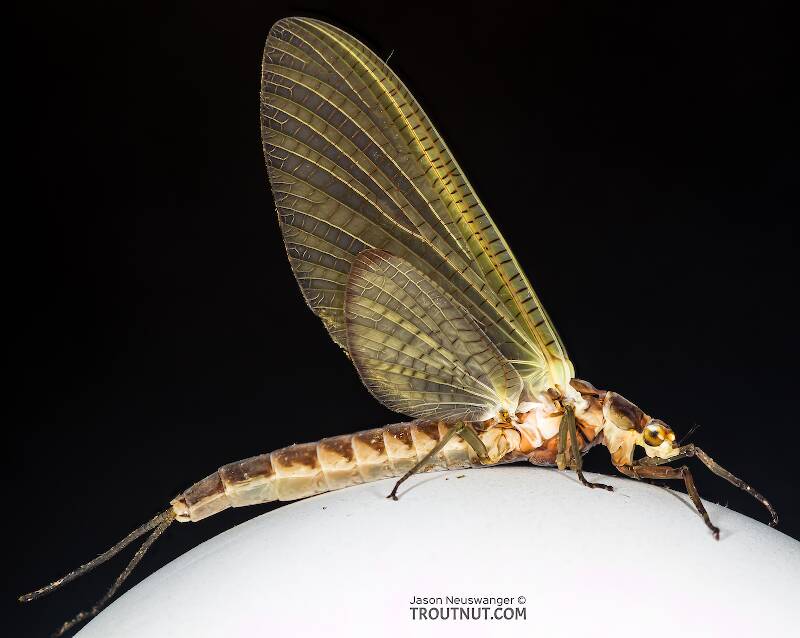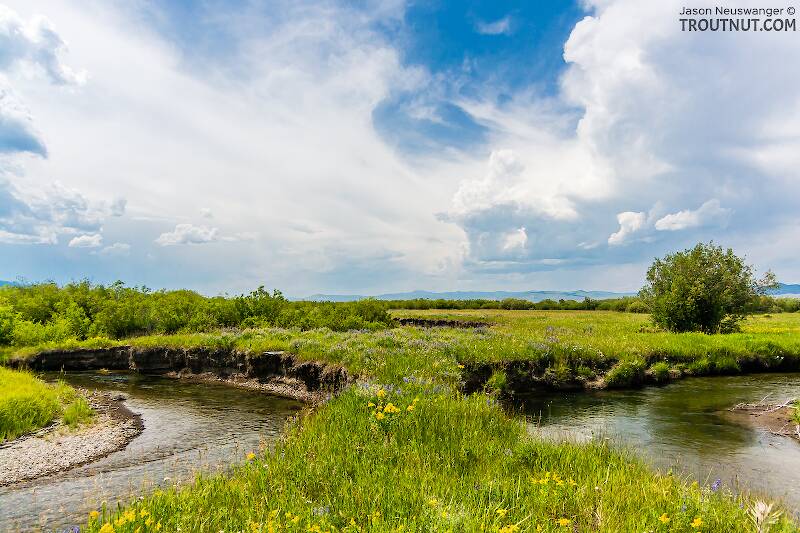
Hex Mayflies
Hexagenia limbata
The famous nocturnal Hex hatch of the Midwest (and a few other lucky locations) stirs to the surface mythically large brown trout that only touch streamers for the rest of the year.
Featured on the forum

This specimen appears to be of the same species as this one collected in the same spot two months earlier. The identification of both is tentative. This one suffered some physical damage before being photographed, too, so the colors aren't totally natural. I was mostly photographing it to test out some new camera setting idea, which worked really well for a couple of closeups.

Troutnut is a project started in 2003 by salmonid ecologist Jason "Troutnut" Neuswanger to help anglers and
fly tyers unabashedly embrace the entomological side of the sport. Learn more about Troutnut or
support the project for an enhanced experience here.
By Bnewell on July 18th, 2012, 9:27 am EDT
This stonefly is one that is fairly common in higher altitude lakes, especially in western North America. I have collected it in higher lakes in Glacier National Park, Montana. Dick Baumann tells me that in a recent publication this stonefly has been renamed Skwala compacta.
Comments / replies
Taxon on Jul 19, 2012July 19th, 2012, 7:45 pm EDT
Hi Bob,
When checking out Skwala compacta, I noticed that the Valid Stonefly Names for North America list maintained by Ed DeWalt has not been updated since 3/19/2009. Do you have any insight into why that might be?
When checking out Skwala compacta, I noticed that the Valid Stonefly Names for North America list maintained by Ed DeWalt has not been updated since 3/19/2009. Do you have any insight into why that might be?


